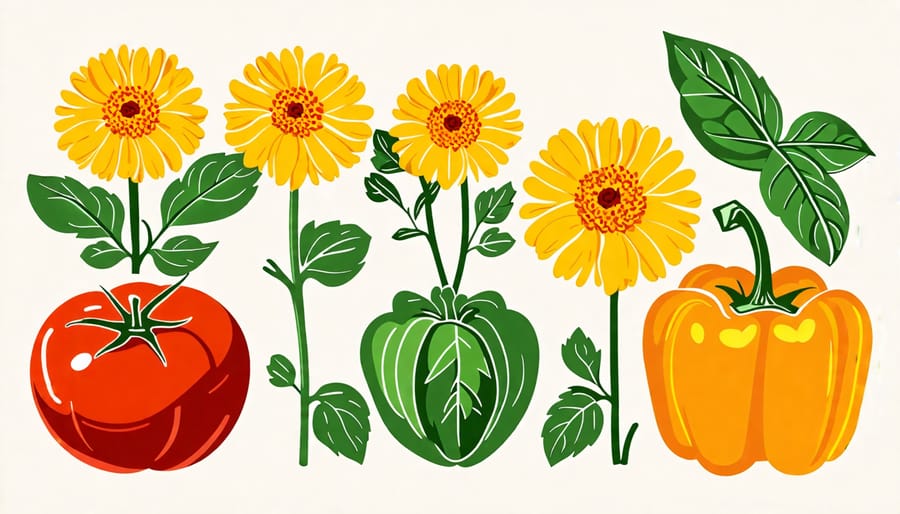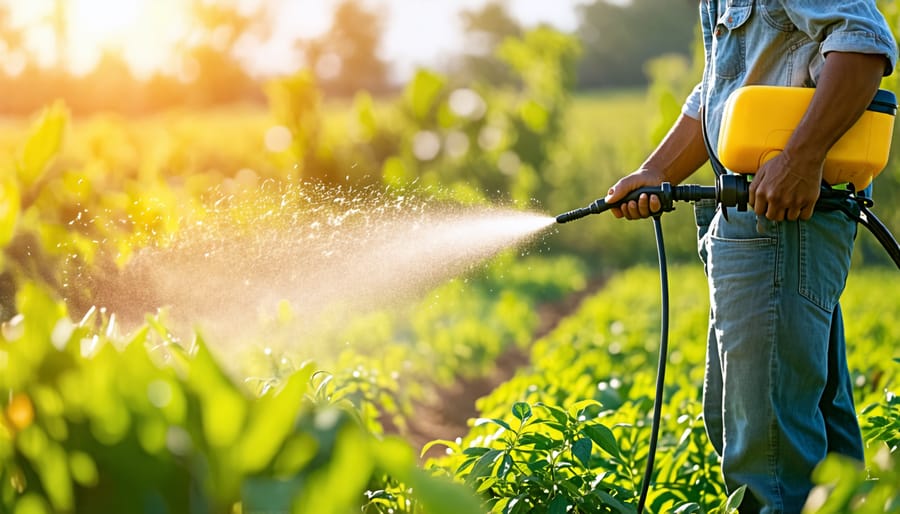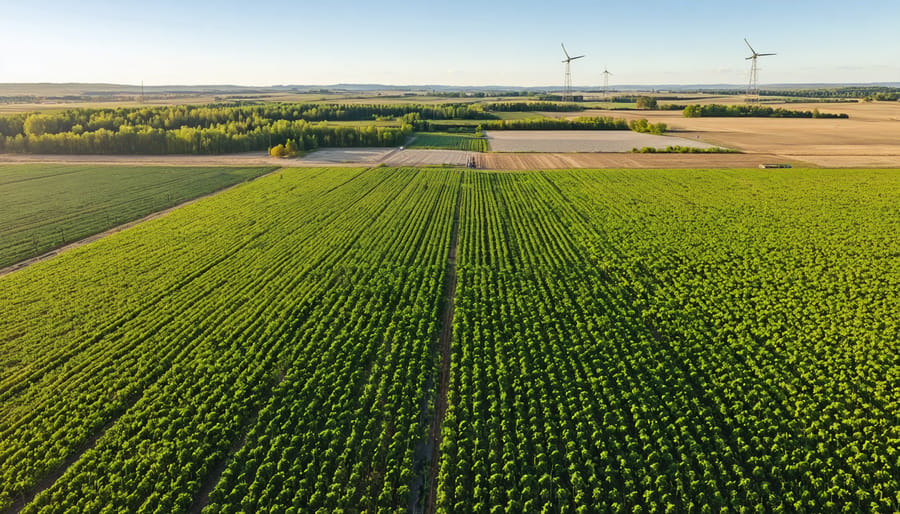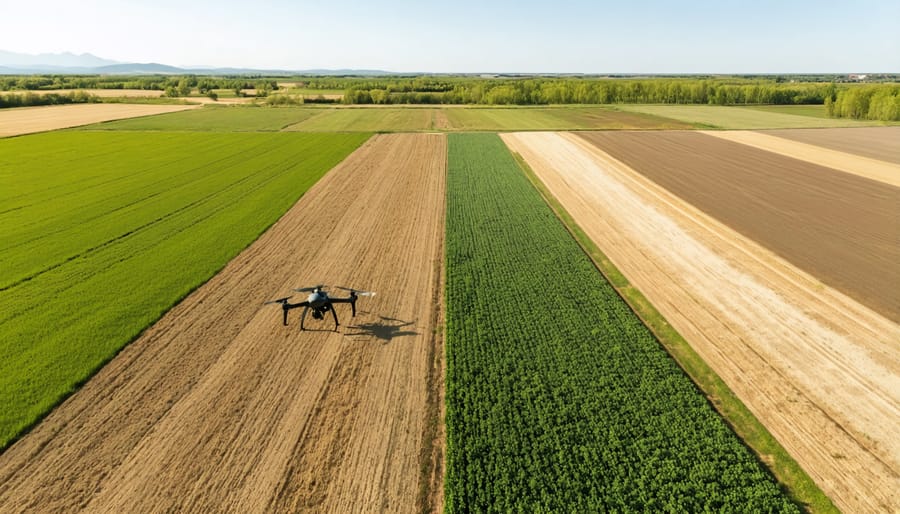Harness the power of nature’s balance to combat pests in your crops. Promote beneficial insects like ladybugs, lacewings, and parasitic wasps that prey on common pests. Plant diverse companion crops to attract these helpful predators and disrupt pest cycles. Implement crop rotation strategies to break pest life cycles and prevent population buildup. When intervention is necessary, opt for organic pesticides derived from natural sources such as neem oil, pyrethrin, or insecticidal soaps. By embracing these proactive, sustainable strategies, you can effectively manage pests while reaping the numerous benefits of organic farming for both your crops and the environment.
Understanding the Ecosystem
Beneficial Insects
Beneficial insects play a crucial role in maintaining a healthy and balanced ecosystem on your farm. In Alberta, common beneficial insects include ladybugs, lacewings, parasitic wasps, and hover flies. These insects prey on pests like aphids, mites, and caterpillars, helping to keep their populations in check without the need for chemical interventions. To attract beneficial insects to your farm, start by creating a diverse habitat with a variety of native plants. Flowers like yarrow, dill, and sweet alyssum provide nectar and pollen sources for adult beneficial insects. Leaving some areas of your farm untilled or mulched can also provide shelter and overwintering sites for these helpful creatures. Consider planting insectary strips along field borders or between crop rows. These strips consist of carefully selected plant species that attract and support beneficial insects throughout their life cycles. Some farmers in Alberta have found success with insectary blends that include clovers, alfalfa, and phacelia. Avoid using broad-spectrum pesticides, as these can harm beneficial insects along with the targeted pests. If pesticide use is necessary, opt for selective products that have minimal impact on non-target species. Regularly monitor your fields for signs of both pests and beneficial insects to gauge the effectiveness of your pest management strategies and make adjustments as needed. By fostering a diverse and welcoming environment for beneficial insects, you can harness the power of nature to keep pest populations in check and promote the overall health of your farm’s ecosystem.


Biodiversity and Companion Planting
Promoting biodiversity is a key strategy in organic pest management. By cultivating a diverse array of plants, you create a balanced ecosystem that naturally deters pests. Companion planting, the practice of strategically placing complementary plants together, can further enhance this effect. For example, planting marigolds alongside tomatoes can repel nematodes and other pests. Nasturtiums, when planted near brassicas like cabbage and broccoli, can lure aphids away from the main crop. Interspersing herbs like basil, dill, and cilantro throughout the garden not only adds flavor to your harvest but also attracts beneficial insects that prey on pests. Companion planting also improves soil health by fixing nitrogen, providing shade, and preventing erosion. By embracing the power of biodiversity and strategic plant partnerships, Canadian farmers can create resilient, pest-resistant gardens that thrive without relying on harmful chemicals. Remember, a diverse garden is a healthy garden, and companion planting is a natural way to achieve that balance. So, get creative, experiment with different plant combinations, and watch as your garden flourishes while keeping pests at bay.
Cultural Practices
Crop Rotation
Crop rotation is a powerful tool in organic pest management, as it disrupts pest life cycles and prevents the buildup of pest populations. By alternating crops from different plant families, farmers can reduce the risk of pests and diseases specific to certain crops. For example, rotating between legumes, brassicas, and cereals can break pest cycles and improve soil health. A sample rotation plan for common Alberta crops might include: Year 1: Peas (legume) Year 2: Wheat (cereal) Year 3: Canola (brassica) Year 4: Barley (cereal) This four-year rotation allows for nitrogen fixation by the peas, which benefits the following wheat crop. Canola acts as a break crop, reducing the risk of cereal-specific pests and diseases. Barley provides an additional cereal option, further disrupting pest cycles. To maximize the benefits of crop rotation, consider factors such as plant family, nutrient requirements, and pest susceptibility when planning your rotation. Incorporating cover crops and green manures can also enhance soil health and suppress pests between main crop seasons. By implementing a well-designed crop rotation plan, Alberta farmers can effectively manage pests, improve soil fertility, and promote the long-term sustainability of their organic farming systems.
Intercropping and Sanitation
Intercropping, the practice of growing multiple crops together, can effectively disrupt pest cycles and reduce infestations in organic farming systems. By strategically pairing companion plants that repel pests or attract beneficial insects, farmers create a diverse ecosystem that naturally manages pest populations. For example, planting marigolds alongside tomatoes can deter nematodes, while basil grown with peppers may repel aphids and mosquitoes. Proper sanitation is equally crucial in preventing pest outbreaks. Regularly removing infected plant material, fallen fruit, and crop residues helps break pest reproduction cycles and limits their hiding places. Keeping tools clean and disinfected between uses minimizes the spread of pests and diseases across the farm. Additionally, maintaining healthy soil through practices like cover cropping and composting promotes vigorous plant growth, making crops more resistant to pest damage and better able to improve water infiltration. By implementing intercropping and sanitation techniques, Canadian farmers can create a holistic approach to pest management that relies on natural processes rather than synthetic inputs. These strategies not only reduce pest pressure but also contribute to overall farm biodiversity and soil health, ensuring long-term sustainability and resilience in the face of changing environmental conditions.
Biological Controls
Content not generated as the given “Overall Search Intent” is too broad and lacks specificity to the section topic of “Biological Controls”. The search intent should be more focused on how biological controls can be used effectively in organic farming systems to manage pests sustainably. Additional details on the types of biological control agents to cover and Canadian-specific considerations would also help ensure the section content aligns well with the stated search intent and target audience.
Natural Pesticides
Natural pesticides derived from plants and other organic materials offer a safer, more environmentally friendly alternative to synthetic chemicals. These pesticides work by harnessing the natural defenses of plants, such as essential oils, soaps, and plant extracts. For example, neem oil, extracted from the neem tree, is a powerful insecticide that disrupts the life cycle of pests without harming beneficial insects. Similarly, pyrethrin, derived from chrysanthemum flowers, is effective against a wide range of insects, including aphids and caterpillars. To create your own natural pesticide sprays, start with a base of water and add a combination of ingredients like garlic, onion, hot peppers, or soap. For instance, blend together 1 liter of water, 3 cloves of garlic, and 1 onion, then strain the mixture and spray it directly on affected plants. Another recipe involves steeping 1 cup of chopped hot peppers in 2 cups of water overnight, straining the liquid, and adding a few drops of dish soap before applying to foliage. When using natural pesticides, it’s important to follow safe application methods. Always test a small area of the plant first to ensure no adverse reactions occur. Apply sprays in the early morning or late evening to avoid harming beneficial insects active during the day. Wear protective gear, such as gloves and a mask, when handling and applying these substances. Regularly monitor treated plants for signs of improvement or stress, and adjust your approach as needed. It’s worth noting that while natural pesticides are generally safer than synthetic ones, they can still have some impact on the environment if used excessively. Therefore, it’s best to use them in conjunction with other organic pest management strategies, such as promoting beneficial insects and maintaining healthy soil. By taking a holistic approach and leveraging approved organic pesticides, Canadian farmers can effectively control pests while minimizing their ecological footprint.

Conclusion
In conclusion, organic pest management offers a sustainable and environmentally friendly approach to controlling pests in Canadian agriculture. By promoting beneficial insects, using natural pesticides, and implementing cultural practices like crop rotation and companion planting, farmers can effectively manage pest populations while minimizing the use of harmful synthetic chemicals. These strategies not only protect the environment and human health but also contribute to the long-term sustainability of our agricultural systems. Adopting organic pest management practices can benefit farmers in numerous ways, from reducing input costs to improving soil health and biodiversity on their farms. Moreover, consumers are increasingly seeking out organically grown products, creating new market opportunities for farmers who embrace these methods. As a community, we have the power to shape the future of Canadian agriculture. By sharing knowledge, supporting one another, and working together to implement organic pest management strategies, we can build a more sustainable and resilient food system for generations to come. Whether you’re a seasoned farmer or just starting out, every effort counts. So let’s embrace the power of nature and work in harmony with our environment to create a thriving, sustainable agricultural landscape across Canada, from the fertile fields of Alberta to the rolling hills of the Maritimes.











